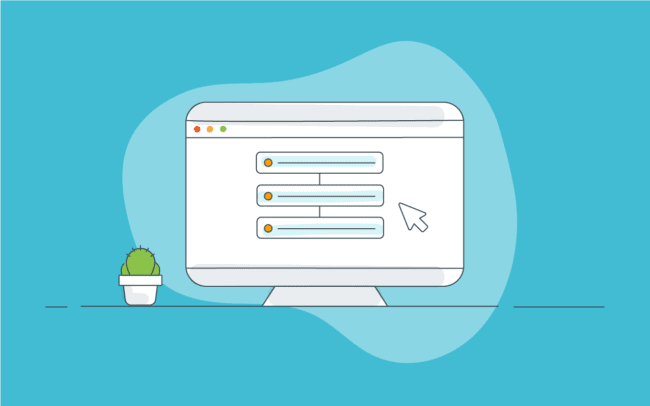WHAT IS AN OPEN-ENDED QUESTION?
An open-ended question, or a free-text question, is a question that requires a respondent to answer in their own words and elaborate on the subject based on their feelings and understanding. Open-ended questions aren’t limited to a set of answer options; therefore, they help gain valuable information on your customers, their experiences, and the efficiency of your operations.
Avius data shows that nearly one third of customers leave comments in satisfaction surveys. These are often a goldmine of information, full of details about customer behavior and ideas for business improvement.
Let’s explore how you can enrich your survey with open-ended questions, when and how to use them to get the most out of them.
WHEN TO USE OPEN-ENDED QUESTIONS
1. After NPS or CSAT questions to find out the reasons behind the scores
When measuring and comparing customer satisfaction scores, it’s beneficial to know why customers responded in the way they did. There are multiple factors which can affect satisfaction, some of which you might not yet be aware of. By giving your customers the opportunity to explain, you’ll open yourself to valuable insights that you can use to improve the customer journey.
2. As a follow-up for ‘Other’ option in a multiple choice question
When writing a multiple choice survey question, you should do your best to offer a complete set of answer options. However, closed-ended questions are restrictive by nature so it’s not always possible to think of or include all of them. Instead of risking your customers picking random answers, offer an ‘Other’ option. But don’t just leave it there. Follow up with those who picked ‘Other’ to find out their opinions and discover new opportunities.
3. At the end of your survey to open the floor to any additional comments
By only asking closed-ended questions, you restrict the answers to your own assumptions. Include an open-ended question at the end to understand customers’ attitudes and needs better. Some answers might surprise you, but if you listen to the comments, you’ll be able to identify your strengths, remove pain-points, meet expectations better, and much more.
Top tip:
When including open-ended questions in your survey, make it clear if they’re optional. Some customers may not have any additional comments so allow them to skip the question. You’ll reduce the amount of irrelevant/junk answers like ‘no’, saving you time during analysis.
EXAMPLES OF OPEN-ENDED QUESTIONS
Here are some examples of open-ended questions that will bring value to your satisfaction survey:
a) Do you have any comments for our management team about what could have improved your visit today?
This question opens the door to a multitude of answers you may not have previously thought of and that will help you improve satisfaction. You can find out what pain-points your guests have, any cleanliness or maintenance issues that affect CX, how your staff performs, suggestions for improving operations or investments you should consider.
b) What could we have done to get a 10/10 today?
By asking this question, you’ll find out exactly where you fell short of meeting customer expectations. Remember to use conditional branching here. Listen to these comments to exceed expectations and improve satisfaction scores in the future.
c) What did you like about your experience with us today?
It’s important to identify guests’ pain-points so you can remove them and improve CX. But it’s equally important to understand what works well for your customers. Use these insights to identify your unique selling points and improve promotional efforts to stand out from the competition. Pay attention to these comments especially when you made any changes to your operations or made a new investment to measure how well it’s performing.
d) Other – Please specify
Always ask your customers to provide more details after they’ve selected ‘Other’ option in a close-ended question. The amount of ideas and opinions can be the same as the amount of customers you have. ‘Other’ option can reveal unexpected attitudes and unanticipated events, so open yourself up to real customer insights and use them to improve all areas of your business.
PROS AND CONS OF OPEN-ENDED QUESTIONS
| PROS | CONS |
| Give real customer insights and capture feelings, attitudes and opinions that would otherwise be missed in close-ended questions | Require more customer’s time and effort to answer |
| Provide explanations for scores | Lower response rate compared to close-ended questions |
| Allow an infinite range of answers | Difficult to analyse and compare |
| A platform for customers to raise issues, provide invaluable suggestions for improving operations, developing and marketing the business | Can gather irrelevant information |
| Help identify customer pain-points | Can capture junk and profanities |
WHY USE OPEN-ENDED QUESTIONS
By asking open-ended questions, you don’t limit or influence your customers with predefined answers. Therefore, you can find out what they really think about your business, what they expect or need. This can really surprise you and help you challenge some of the assumptions you make about your guests.
Customers often use a free-text box to raise problems, name an employee who made their experience great, or an employee who wasn’t so helpful. The insights can help you identify training needs or run a successful employee reward scheme.
Free-text questions can also help reduce survey fatigue by breaking down the monotony of a series of closed-ended questions. However, be careful not to over-use them as it’ll lower your survey’s completion rate.
ADD VALUE TO YOUR SATISFACTION SURVEY
Open-ended questions bring a lot of value to satisfaction surveys. The insights from your customers may surprise you, but ultimately, they’ll help you make informed decisions to improve your business, grow customer retention, and drive more revenue.
Get in touch with our experts who will be able to advise you on the best survey design to get actionable insights.
By Natalia Kaczmarek


